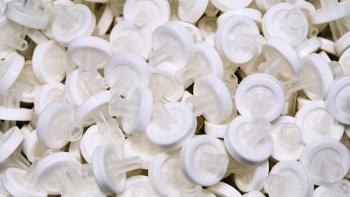
- BioPharm International-11-01-2015
- Volume 28
- Issue 11
The Development of Process Chromatography in Bioprocessing
Industry experts discuss the development of process chromatography in bioprocessing.
BioPharm International spoke with Mark A. Snyder, PhD, Manager, Applications R&D Group, and Kim Brisack, R&D Applications, at Bio-Rad Laboratories Process Chromatography Division about the development and challenges of process chromatography in bioprocessing.
BioPharm: How has the use of chromatography changed since it was first introduced for bioprocessing?
Snyder: Almost everything is different! Column design has changed significantly, having evolved from pure manual packing to fully automated systems. Also, very large (1-2 meter) columns are now being routinely used. Resins have made significant progress on several fronts with expanded bead chemistries and particle sizes, a wider catalog of ligands, higher binding capacities, and faster flow rates. Other forms of downstream matrices, such as monoliths and membranes, have also been developed. Another area of progress is the reduced number of purification steps for typical processes, from an historical average of five, down to three, with some manufacturers even trying out two-step processes. Economic pressures to do more with less has led to increased use of software-aided process decisions. Modeling software is increasingly used to minimize the use of buffers, time, and staging. Even the modes of chromatography modes have grown from simple flow-through (vs. bind/elute) to weak partitioning, displacement chromatography, and so on.
Brisack: Even as the fear of using very large columns has been eliminated, many downstream processes are moving to smaller columns. The use of smaller columns has been enabled both by higher binding capacities and by biotherapeutics with higher per-mg activities than before. In some cases, the impetus is on incorporating prevalidated, prepacked columns with minimal impact to the processing area during changeover. Continuous chromatography, which uses smaller columns by design, by maximizing the loading on each column, is also an option to maximize productivity in processing areas in lieu of massive stainless steel columns.
BioPharm: What are the typical challenges involved in process chromatography?
Snyder: The advent of faster protein production rates during fermentation has created issues such as higher target protein aggregation. Today, aggregates have to be eliminated more aggressively than in the past. In the same vein, regulatory scrutiny of quality outputs such as isoforms, glyco-heterogeneity, and dimer content has increased. Consequently, the need for an even more uniform product has put additional pressure on the downstream process. At the same time, the globalization of biotech, coupled with pressures to lower healthcare costs, requires processes that have a smaller footprint, take fewer steps, use less consumables, and can be easily transferred from one manufacturing site to another.
All of these challenges are being met the same way as always-through careful consideration of chemistry and matrix for each step, a thorough understanding of how the step works, and intelligent overall design for easy transition from step to step. I should add a note of thanks to those companies who sell viral clearance solutions. The advent of viral filtration membranes and other technologies has allowed processes to maintain their viral clearance safety margins while at the same time shrinking the number of overall steps needed.
Brisack: Historically, high recovery was one of the most important variables to consider when selecting a media. With the focused attention on product homogeneity as outlined above, clearance of product-related and process-related impurities often takes precedence over pure recovery. Incremental differences in dimer clearance, for example, can impact the overall product profile owing to a reduced immunogenicity of the final product.
BioPharm: Which chromatographic tools are most commonly used in downstream processing?
Snyder: The tools most commonly used in downstream processing are software packages. As mentioned, modeling software designed to tease out inefficiencies, as well as plan footprints and use of utilities, have significantly helped in overall process economics and facility planning. In addition, the introduction of quality by design (QbD) has fostered the use of design-of-experiments (DoE) programs, which have aided process developers in making regulatory submissions that allow for easier process changes after licensure. Typically, these process changes represent incremental process improvements, [which would have made] submissions to regulatory agencies [...] too burdensome in the past. However, DoE software could be misused if the end user doesn’t understand exactly how the results can and cannot be interpreted. Finally, statistical packages are increasingly being used to perform multivariate analysis on large amounts of data to discern relationships between input and output parameters from multiple manufacturing cycles that might not have been revealed during process development.
BioPharm: Are there any new novel/innovative techniques or tools currently being used by the industry or in development?
Snyder: New chromatographic purification products are being introduced all the time. Also, I think that new methodologies for making inline, online, or at-line measurements of various quality outputs are slowly making their way into the industry. These will help fulfill FDA’s [goal] of making more use of process analytical technology to help ensure quality products by increasing process control.
Brisack: Automated column packing has become a reality but it is still not a ‘push-button’ technology. New advances in software and hardware have, however, been able to reduce variability in this historically challenging procedure. There has also been an increased interest in continuous processing to maximize resin capacity and reduce core cycle time. Whether this can realistically be implemented at process scale remains to be seen.
Article Details
BioPharm International
Vol. 28, No. 11
Page: 26–27
Citation: When referring to this article, please cite it as S. Haigney, “The Development of Process Chromatography in Bioprocessing,” BioPharm International28 (11) 2015.
Articles in this issue
about 10 years ago
Selecting the Right Viral Clearance Technologyabout 10 years ago
Best Practices for Sterility Assurance in Fill/Finish Operationsabout 10 years ago
CMOs Continue to Improve Overall Biomanufacturing Performanceabout 10 years ago
FDA Overhauls Inspection Operationsabout 10 years ago
Good Documentation Practice: Saving Data for the Long Termabout 10 years ago
Next Steps in Outsourcing Relationshipsabout 10 years ago
Investigating Biologicsabout 10 years ago
Piloting Track-and-Trace ImplementationNewsletter
Stay at the forefront of biopharmaceutical innovation—subscribe to BioPharm International for expert insights on drug development, manufacturing, compliance, and more.




